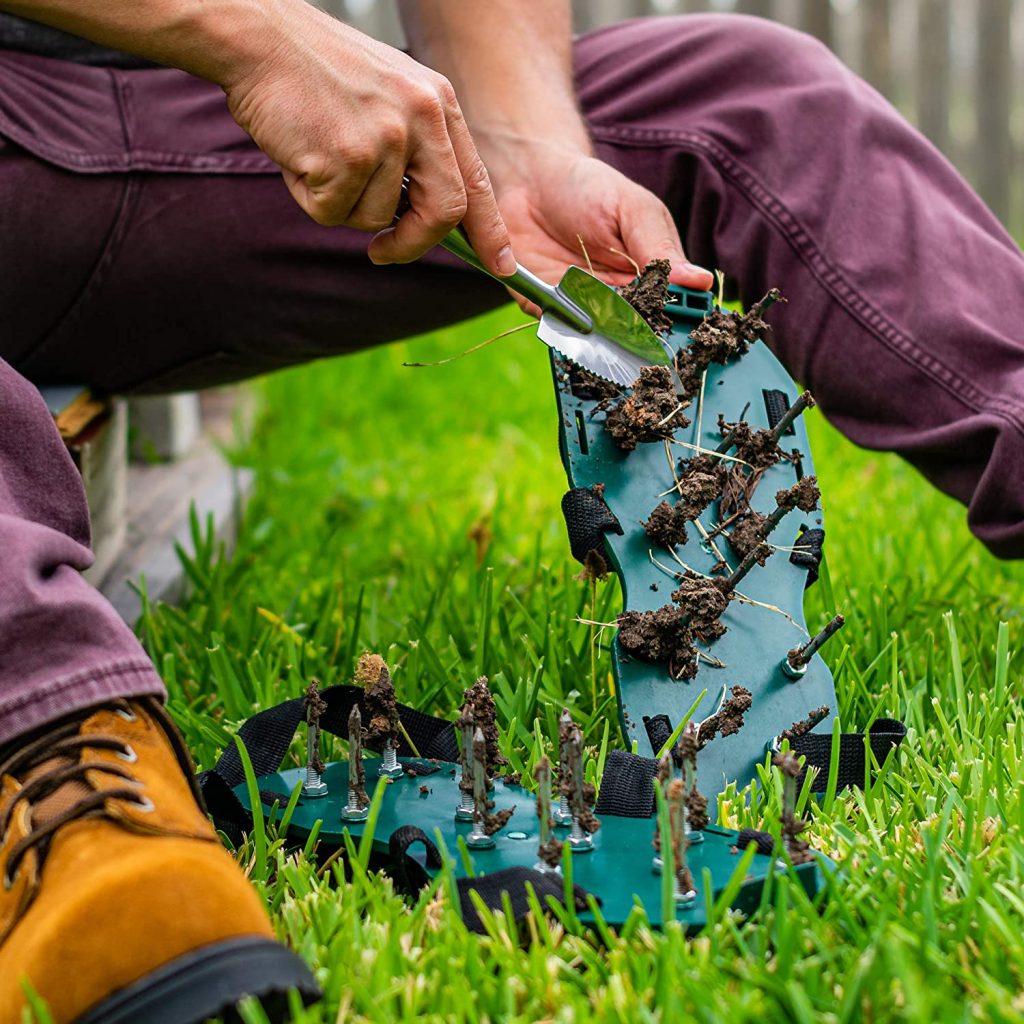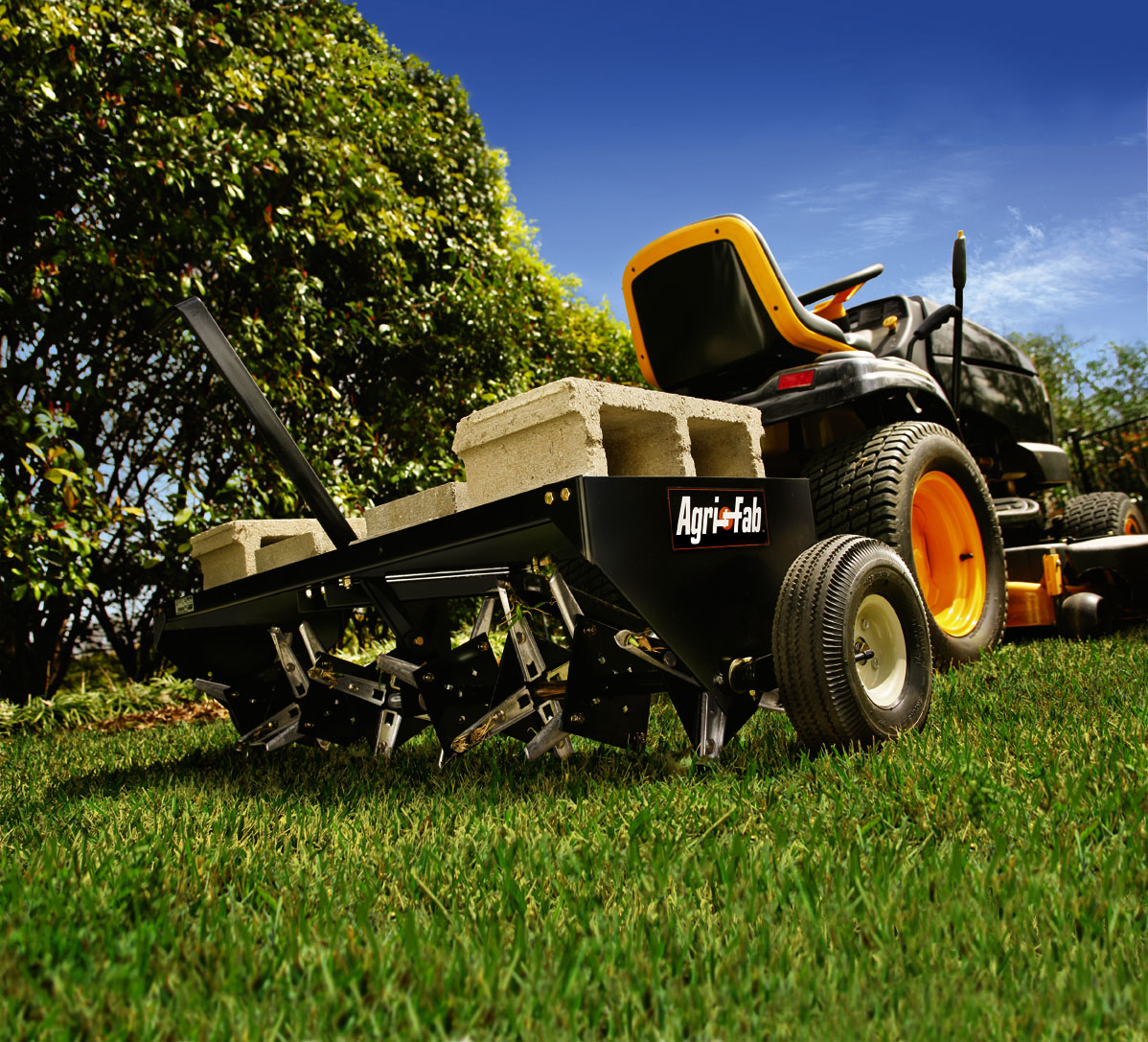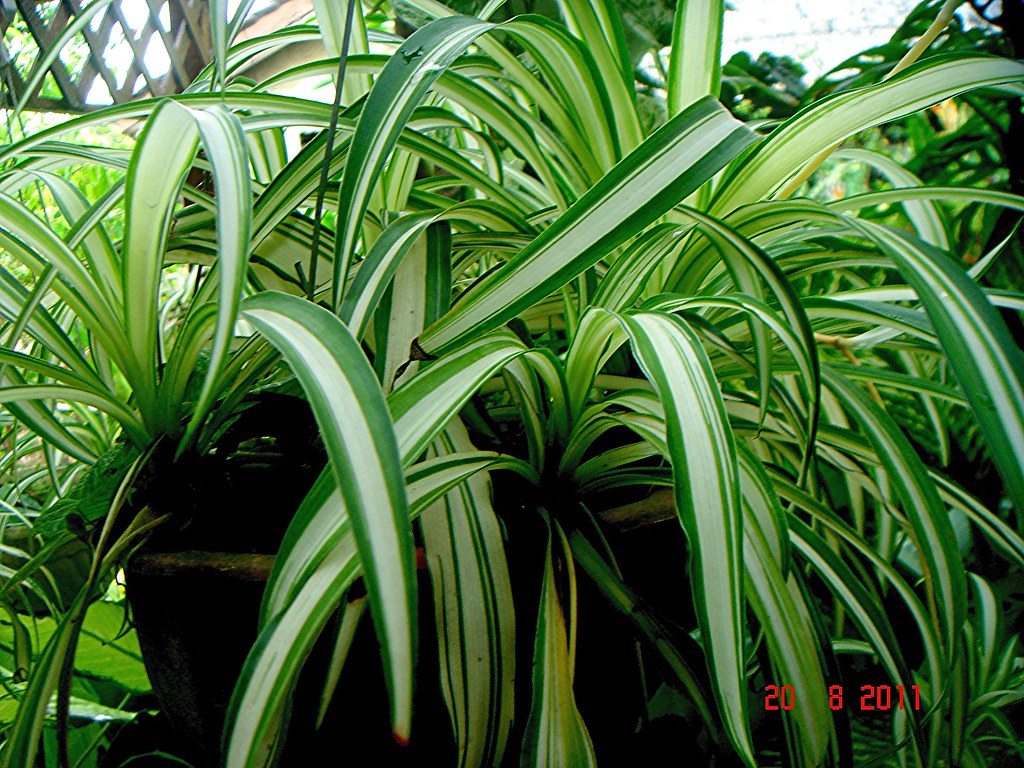Lawn aeration is the process of punching small holes in your lawn to allow air, water, and nutrients to reach the roots of your grass. This helps your lawn grow thicker and healthier. If you have a lot of foot traffic on your lawn, live in an urban area with high pollution levels, or have poor soil drainage, your lawn may benefit from aeration.
There are two types of aerators: manual and power-driven.
- Manual aerators are less expensive but require more work.
- Power-driven aerators are more expensive but will save you time and effort.
If you decide to purchase an aerator, be sure to get one that is the right size for your lawn. Also, please read the instructions carefully before using it, so you do not damage your lawn.
What are Lawn Aerators?
Aerators are devices that poke small holes in the ground, which allows water, air, and nutrients to reach the roots of your grass. Lawn aeration is a turfgrass management practice that can benefit your lawn and the environment.
There are many benefits of aerating your lawn. Aeration can improve the appearance of your lawn by promoting new growth and improving drainage. It can also help reduce compaction, making it easier for your grass to grow. In addition, aerating can help reduce water runoff and promote healthy root growth.
If you have a large lawn, you may consider hiring a professional to aerate it. However, many hand-held or tow-behind aerators are also available for rent or purchase if you prefer to do it yourself.

How Lawn Aerators Work
Lawn aerators are a great way to keep your lawn healthy and green. By creating small holes in the soil, they allow air, water, and nutrients to reach the roots of your grass. This helps the roots to grow deep and strong, leading to a healthier lawn.
There are two main types of lawn aerators: manual and powered. Manual aerators look like small plugs you insert into the ground with your foot or hand. Powered aerators are either gas-powered or electric and do all the work for you.
To use an aerator, walk across your lawn (or operate the machine if you have a powered model) and insert the spikes into the ground at regular intervals. The amount of time this takes will depend on the size of your lawn, but it’s generally a quick and easy process. It would be best if you did this once or twice a year for the best results.
What Is the Purpose of a Lawn Aerator?
A lawn aerator is a machine that punches small holes in the ground, making it easier for water and nutrients to reach the roots of your grass. This process, also known as core aeration, can benefit your lawn in several ways.
For one, an aerator can help reduce compaction in your lawn. Over time, foot traffic and even just the weight of the grass can cause compacting, making it harder for water and air to reach the roots. Aerating helps alleviate this problem by breaking up the soil so there’s more room for oxygen and moisture to get down deep.
Aeration also allows your grass to develop deeper roots, making for a healthier lawn. Healthier grass is better able to withstand drought and disease, so aerating could be particularly beneficial if you live in an area with hot summers or frequent periods of wet weather.
Finally, aeration can improve the overall appearance of your lawn by promoting the growth of new grass shoots. If you have patches of dead grass or thinning areas, core aeration can give new life to your lawn by encouraging new growth.
How to Determine If Your Lawn Needs Aeration
Lawns need aeration when the thatch layer is more than 1/2 inch thick. Thatch is a layer of living and dead organic matter at the soil surface. A healthy thatch layer helps protect the grass roots from heat and drought stress, but too much of it prevents air, water and nutrients from getting to the root zone.
There are several ways to determine if your lawn needs aeration.
- One is to pull up on a corner of the turf. If it comes up quickly, or you see significant compaction in the soil beneath, your lawn probably needs aerating.
- Another way is to take a screwdriver or pitchfork and push it into the ground; if it meets resistance after just an inch, compaction is likely to present, and aeration will help relieve it.
Finally, try walking across your lawn in rubber-soled shoes; if you leave noticeable footprints behind (especially if they remain visible for several minutes afterward), your lawn could benefit from some aeration.
When to Aerate Your Lawn
Aerate your lawn in the spring and fall. Spring is the best time to start preparing your lawn for the growing season. Fall is the best time to aerate because it helps your lawn recover from summer stress and prepares for winter dormancy.
Lawns need oxygen, just like any other living thing. Annual aeration can help keep your grass healthy and green. If you have a lot of foot traffic on your lawn, you may need to aerate more often.
To aerate, use a garden fork or an electric or gas-powered core aerator to remove small plugs of soil from the turf. This process creates tiny holes that allow air, water and nutrients access to the root system of your grass.
Types of Lawn Aerators
There are a few different types of lawn aerators available on the market. The most common type is the spike aerator, which has long metal spikes that penetrate the ground and loosen up the soil.
Another popular type is the plug aerator, which removes small cores of soil from the lawn. This type of aerator is best for heavily compacted soils. Finally, there is the brush aerator, which has bristles that loosen up the top layer of soil. This type of aerator is best for sandy soils.
No matter what type of lawn you have, it’s vital to Aerate at least once a year to ensure your grassroots have access to air, water, and nutrients. If you live in an area with heavy clay soil, you may need to Aerate more than once a year.

Alternative Lawn Aeration Techniques
There are a few alternative methods of lawn aeration that don’t require any special equipment. One is to pour a cup of water onto the lawn and then poke holes in the ground with a garden fork. This method is best for small areas or spot-treating problem areas.
Another alternative is to use shoes with spikes or nails driven through them. This method works best on dry, compacted soil. Walk around the lawn wearing these shoes, and the spikes will punch holes into the ground as you go. Be sure to wear gloves to protect your hands from sharp spikes!
Lawn Aeration by Hand
Lawn aeration punches small holes in your lawn to allow water, air, and nutrients to penetrate the grass roots better.
There are a few alternative methods of lawn aeration that don’t require any special equipment. One is to pour a cup of water onto the ground and then poke holes in the ground with a garden fork. This method is best for small areas or spot-treating problem areas.
Spiked shoes
Another alternative is to use shoes with spikes or nails driven through them. This method works best on dry, compacted soil. Simply walk around the lawn wearing these shoes, and the spikes will punch holes into the ground as you go. Be sure to wear gloves to protect your hands from sharp spikes!

The Cost of Lawn Aerators for DIYers
Those who opt to do their lawn aeration can purchase an aerator for around $75. The price may be higher or lower depending on the size and features of the machine. Be sure to factor in the cost of gas and any other required materials when budgeting for a DIY project.
Additionally, it is essential to consider how much time and effort will be required to complete the job. Lawn aeration is not a difficult task, but it takes time and effort to ensure it is done correctly. Those who are short on time or do not want to deal with the hassle may find that hiring a professional is worth the extra cost.

What Are the Benefits of Lawn Aeration?
Lawn aeration is often recommended as a beneficial practice for lawn care. Although it may seem like a lot of work, lawn aeration can provide several benefits for your lawn. Aeration can help improve drainage, reduce compaction, and promote healthy growth.
One of the main benefits of lawn aeration is that it can improve drainage. If your lawn has poor drainage, water will pool on the surface and cause the grass to become soggy and damaged. Lawn aeration helps create channels in the soil so water can drain more easily. This can help to prevent problems like puddling and flooding.
Lawn aeration can also reduce compaction. Compacted soil makes it difficult for grass roots to grow and Spread out. This can lead to unhealthy patches of grass or even bare spots. Lawn aeration loosens up compacted soil, making it easier for roots to spread out and get the oxygen they need to grow.
Finally, lawn aeration can promote healthy growth by improving nutrient uptake. Nutrients from fertilizers are more readily available to plants when the soil is loose and porous. This means that your lawn will be able to utilize any fertilizer better you apply, resulting in healthier growth overall.
Is It Worth Aerating Your Lawn?
The short answer is yes, aerating your lawn is worth it! Here are three reasons why:
1. Aeration relieves compaction. When your lawn is compacted, the soil has a more challenging time absorbing water, nutrients, and oxygen. This can lead to problems like yellow patches, thinning grass, and even moss or weeds taking over. Lawn aeration helps to loosen up the soil so your lawn can thrive.
2. Aeration helps ensure a healthy root system. A robust root system is vital for a healthy lawn, and aeration can encourage roots to grow deeper and more robust. This will result in a sturdier lawn that can withstand heat, drought, pests, and disease.
3. Aeration can improve the overall appearance of your lawn by promoting new growth. If your lawn looks a little thin or patchy, aeration followed by some overseeding can work wonders! You’ll be amazed at how lush and green your lawn will look in no time at all.
FAQs
What Is Lawn Aeration?
Lawn aeration is the process of punching small holes in your lawn to allow air, water, and nutrients to penetrate the grass roots. This is usually done with a machine called an “aerator,” which looks like a cross between a power mower and a garden roller.
You can also find hand-held versions of these machines, but they’re not as effective in large areas.
Why Should I Aerate My Lawn?
There are several reasons why you might want to aerate your lawn. If your soil is compacted, for instance, aeration can improve drainage. If your grass isn’t growing as well as it should be, or if it’s starting to thin out in spots, aerating can also help by allowing the roots to access more air and nutrients.
Generally, any lawn that’s being heavily used (for example, if you have kids or pets who play on it regularly) will benefit from occasional aeration.
How Do I Know If My Lawn Needs Aerating?
A few telltale signs indicate your lawn could use some aerating. If footprints or tire marks remain on your grass long after someone has walked or driven over it, that’s a good sign that the soil is compacted and could use some loosening up.
Another indication of compaction is if water puddles on the surface of your lawn instead of sinking into the ground within minutes after watering or rain showering; this means that air isn’t getting down into the root system where it’s needed most.
What does aeration do to the lawn?
This helps improve the lawn’s health and make it more drought-resistant. Aeration also helps to reduce compaction, which can damage the roots of the grass.
How Do You Aerate Your Lawn by Hand?
If you have a small lawn, you can aerate it by hand. This is a cheap and easy way to improve the health of your lawn. All you need is a garden fork.
To aerate your lawn by hand:
- Start by wetting the lawn so that the soil is moist.
- Use the garden fork to poke holes in the soil.
- Space the holes about 3 inches apart.
- Poke the fork down into the soil until it hits the bottom.
- Repeat this process over the entire lawn.
After aerating, fertilize and seed your lawn if necessary. Water regularly and mow as usual. With proper care, your lawn will soon be healthy and lush!
What Is the Easiest and Most Effective Way to Aerate a Lawn?
The easiest and most effective way to aerate a lawn is with a core aerator. This aerator removes small cores of soil from the lawn, allowing air and water to penetrate the soil more easily.
Core aerators can be rented from most home improvement stores.
How Do You Use a Classen Aerator?
A Classen aerator is a power tool used to remove small plugs of soil from your lawn. This allows water, air and nutrients to penetrate the grassroots more quickly, resulting in a healthier lawn. You can use a Classen aerator by following these simple steps.
- First, select the correct size aerator for your needs. The width of the aeration tines will determine how much area you can cover with each pass. A broader model will cover more ground faster. Still, a narrower model may be better suited for you if you have a small lawn or want to maneuver around obstacles.
- Next, choose the correct settings for your soil type and grass species. Again, consult your owner’s manual for guidance on this step. Too much pressure could damage delicate turf grasses, while too little pressure won’t provide any benefit at all. Find a happy medium and adjust as needed until you get the perfect results.
Finally, start Aerating! Begin in one corner of your lawn and work across straight lines until you’ve covered the entire area. Be sure to overlap each pass by about half, so you don’t miss any spots. And that’s it! After completing these steps, sit back and enjoy your healthy new lawn.”
Is Sticking a Pitchfork into the Lawn the Same As Aerating It?
Aerating your lawn may not be the most pleasant task, but it is essential if you want a healthy lawn. Many people believe that sticking a pitchfork into the lawn is an adequate substitute for aerating, but this is not true.
While poking holes in the ground with a pitchfork may help water and air to reach the roots of your grass, it does not do as good of a job as aerating. Aerating machines remove minuscule plugs of soil from the ground, which allows air, water, and nutrients to reach the roots more easily.
If you have a large lawn, or if you don’t want to deal with renting an aerator, you can hire someone to do it for you.







